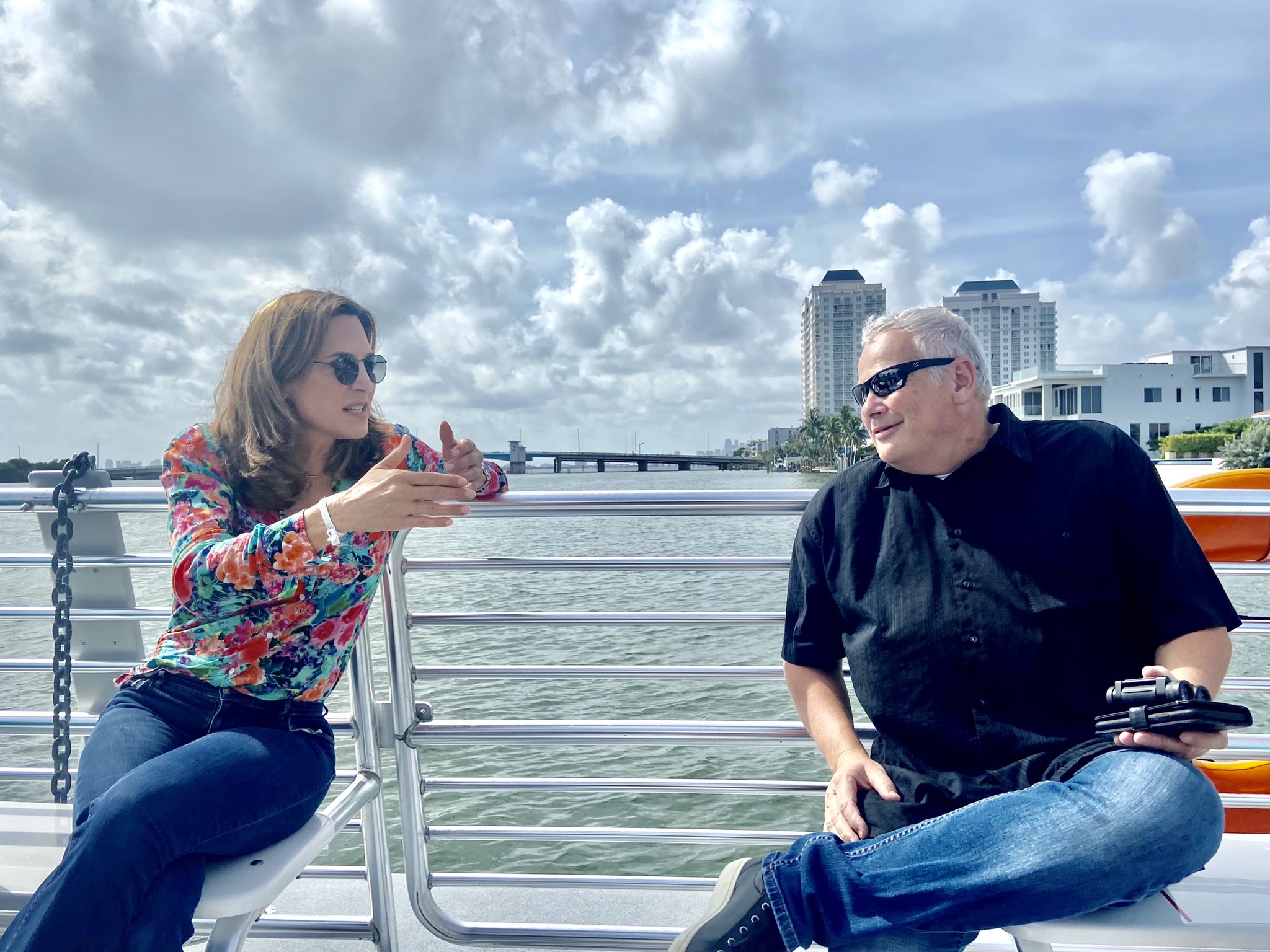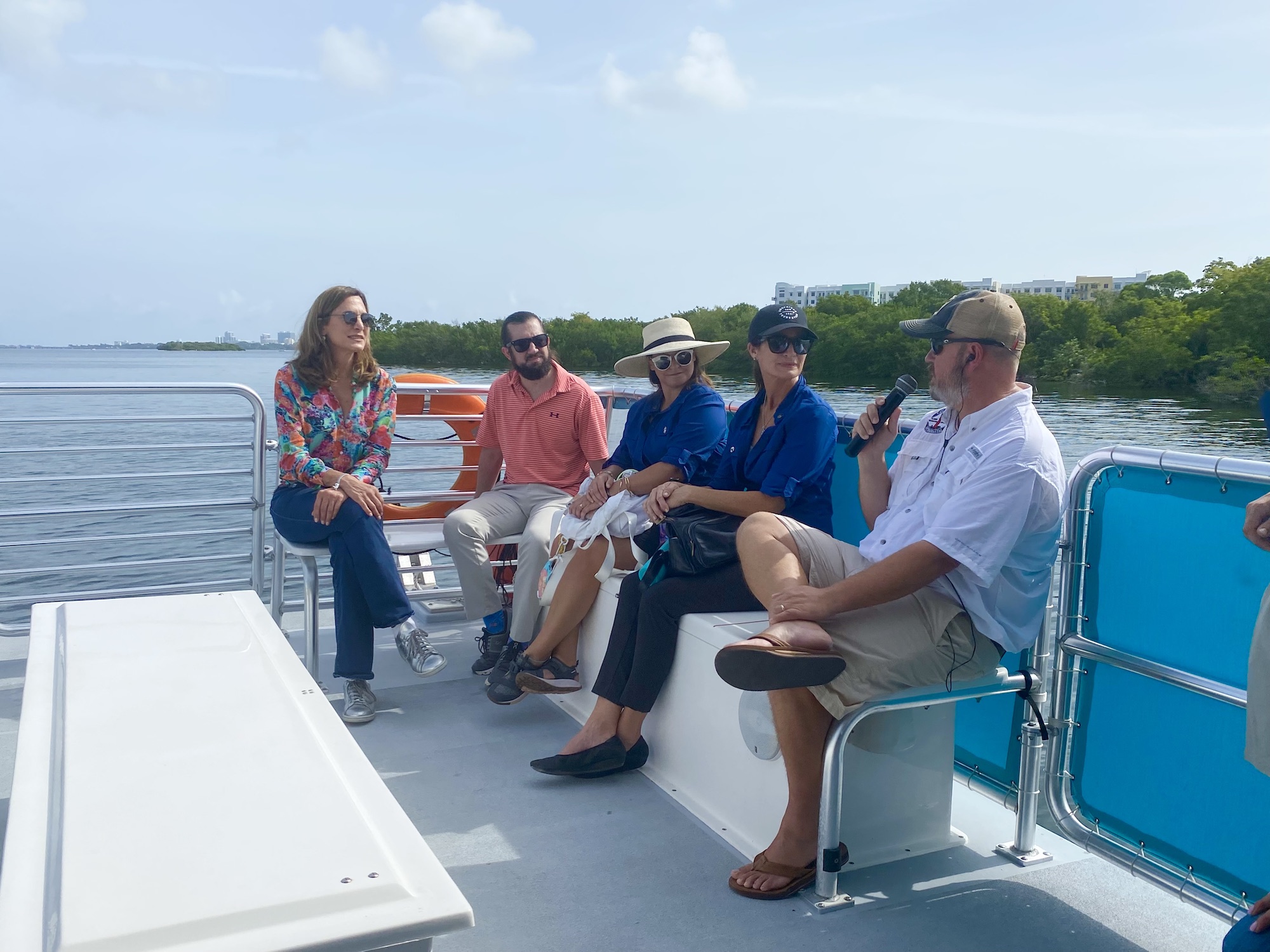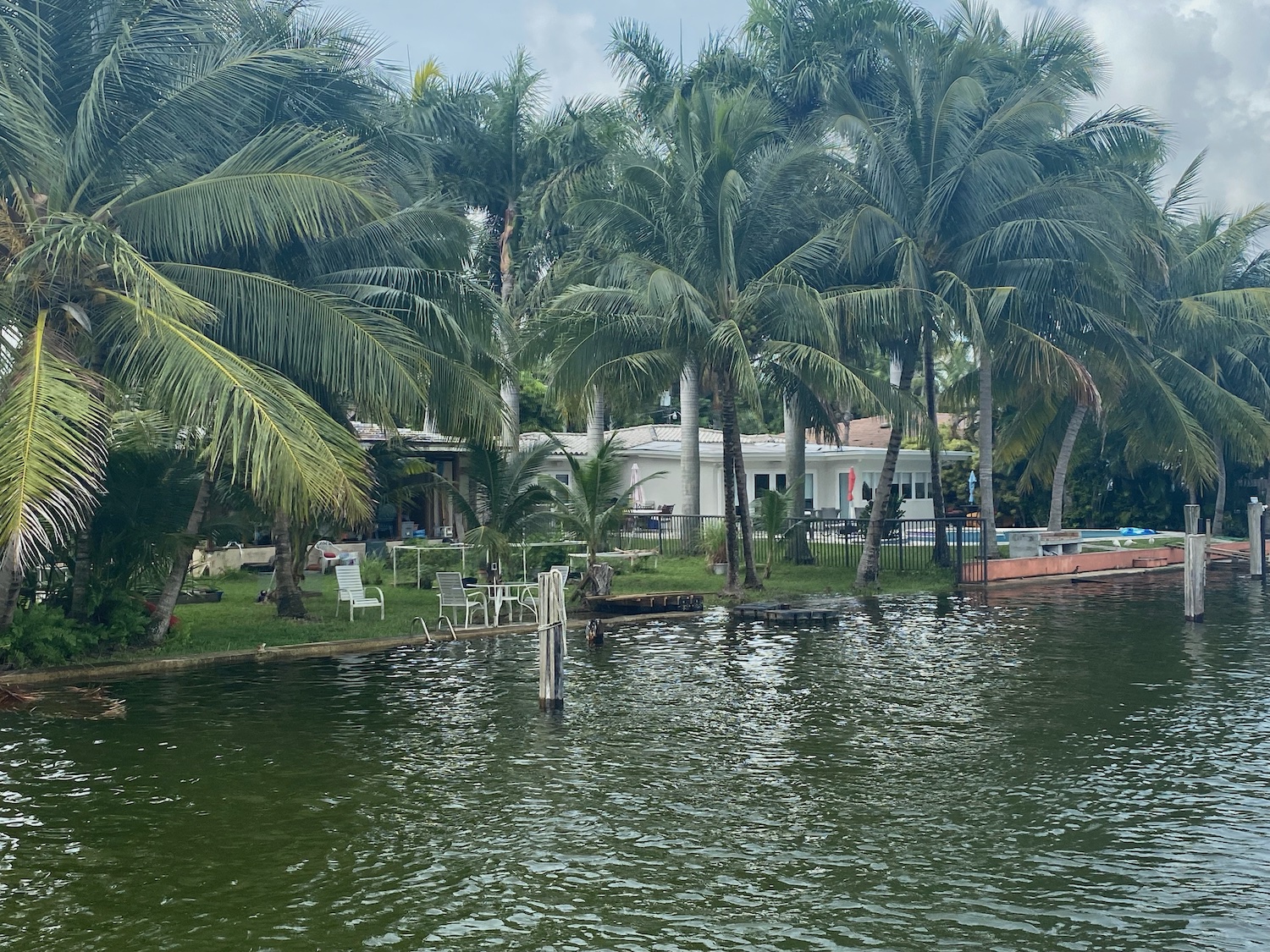
What happens on the land ends up in the Bay — and the Bay on the land.
U.S. Rep. Maria Elvira Salazar (R-FL27) joined us for a “field trip” on Biscayne Bay to learn about local climate impacts. She was an award-winning TV journalist before becoming a Member of Congress, so when she heard the sound bite summation, she called it to her staff’s attention: “‘What happens on the land ends up in the Bay.’ Did you hear that? That’s what it’s about.”

Rep. Salazar had just heard those words from Irela Bagué, Miami-Dade County Chief Bay Officer. Bagué was explaining that Biscayne Bay is on life support. It’s not dead, but it could become dead if we don’t find ways to clean up what’s flowing into the Bay from the land.
Dr. Lynette Cardoch, a coastal geologist with the engineering firm Moffatt & Nichol, singled out sewage as a one of the culprits in a recent fish kill in the Bay.
Thank you to my friends at @republicEn and all of our great Miami leaders for showing me and my team the effects of King Tide.
— Rep. María Elvira Salazar (@RepMariaSalazar) October 8, 2021
What happens on land ends up in the Bay — our waters are our responsibility. pic.twitter.com/3NaF2aoFuV
Dr. Robert Young, a geologist and Director of the Program for the Study of Developed Shorelines at Western Carolina University, explained how sea level rise is affecting septic tanks — how salty sea water kills off some of the bacteria that would otherwise break down the solids in the tanks and how the drain fields become waterlogged and non-functional.
As the Congresswoman had heard, “What happens on the land ends up in the Bay.”

Then we saw the Bay rising onto the land, driven by a King Tide — the exceptionally high tides that occur in September, October and November when the moon is closest to earth and the earth is closest to the sun. We planned the trip to see the impact of a King Tide expected at 11:30 am on 10/8/21, and there it was, lapping over seawalls, coming up through the porous limestone rock on which Miami is built, flooding septic tanks, roadways, neighborhoods and businesses.
Dr. Young explained that human-induced warming causes sea water to expand and land ice to melt, resulting in rising sea levels. Sea level has risen 5 inches in Biscayne Bay since 1993. The rise from 2000 to 2040 is expected to be 10 to 17 inches. By 2060, it’s expected to be 14 to 34 inches higher. (As to projections, see Southeast Florida Regional Climate Change Compact.)
Experts say that the pollution we produce on land has made its way into Biscayne Bay, endangering the flora and fauna that create the natural beauty we all enjoy. We must preserve our natural resources. The water, the environment, and our way of life are all connected. pic.twitter.com/VKy1NUb01l
— María Elvira Salazar 🇺🇸 (@MaElviraSalazar) October 9, 2021
The takeaway from this field trip was “what happens on land ends up in the Bay,” and “the Bay is coming up on the land.” We were there to make the case that we need something at the speed of free enterprise innovation to head off the worst of climate impacts. We’re looking to leaders like Rep. Salazar to show the way to policy innovation.
Many thanks to Rep. Salazar and her team for joining us, and many thanks to our sponsoring partners — American Water Security Project and Audubon Florida.
